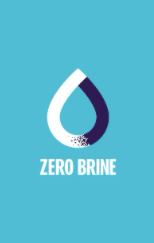Circular economy approach to industrial wastewater
The chemical industry alone produces 11.5 million tons of brine every year. Brines are highly concentrated solutions of salt water containing many chemicals, minerals, metals and organics which can be extracted as valuable resources for reuse.
The current linear economy approach perpetuates the disposal of brine. This has economic consequences in terms of treatment and disposal costs and environmental impacts such as harmful salinity for land and aquatic ecosystems and greenhouse gas (GHG) emissions from energy consumption.
ZERO BRINE proposes a circular economy approach to reduce the negative impacts of brine from process industries and create economic value from the reuse of its constituents, such as sodium chloride, magnesium, calcium, sulphates, sodium bicarbonate, heat and fresh water. ZERO BRINE demonstrates the use of a combination of existing and innovative technologies for recovery and reuse. This policy brief first demonstrates the potential resource recovery, environmental and economic benefits as well as policy gaps and recommendations.
Resource recovery is the key outcome, and has both environmental and economic benefits:
- Recovery of fresh water which comprises between 60% and 91% (average 73%) of the brine's volume.
- Recovery of brine, which is primarily a 30% to 40% solution of sodium choride.
- High recovery rates of a range of minerals.
- The pilot projects had the following environmental benefits:
- Reduced abstraction of freshwater resources due to the volumes recovered.
- Reduction of GHG emissions through energy efficiency, waste-heat capture and reduced transport impacts.
- Volume of brine disposed of into the environment cut by more than 90%.
- Economic benefits are related to cost savings, resilience, critical raw materials, revenue streams and new businesses and jobs.

